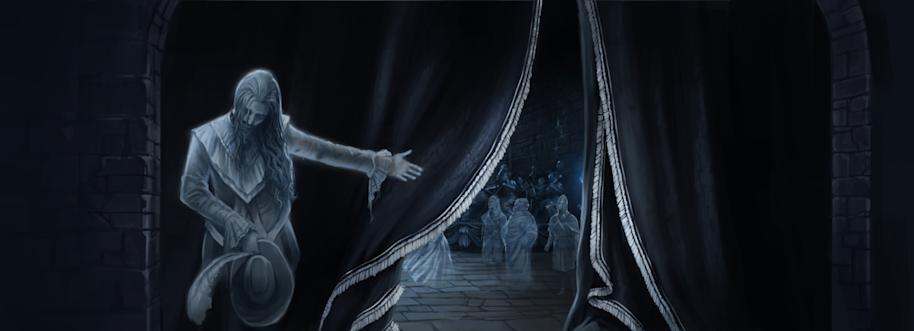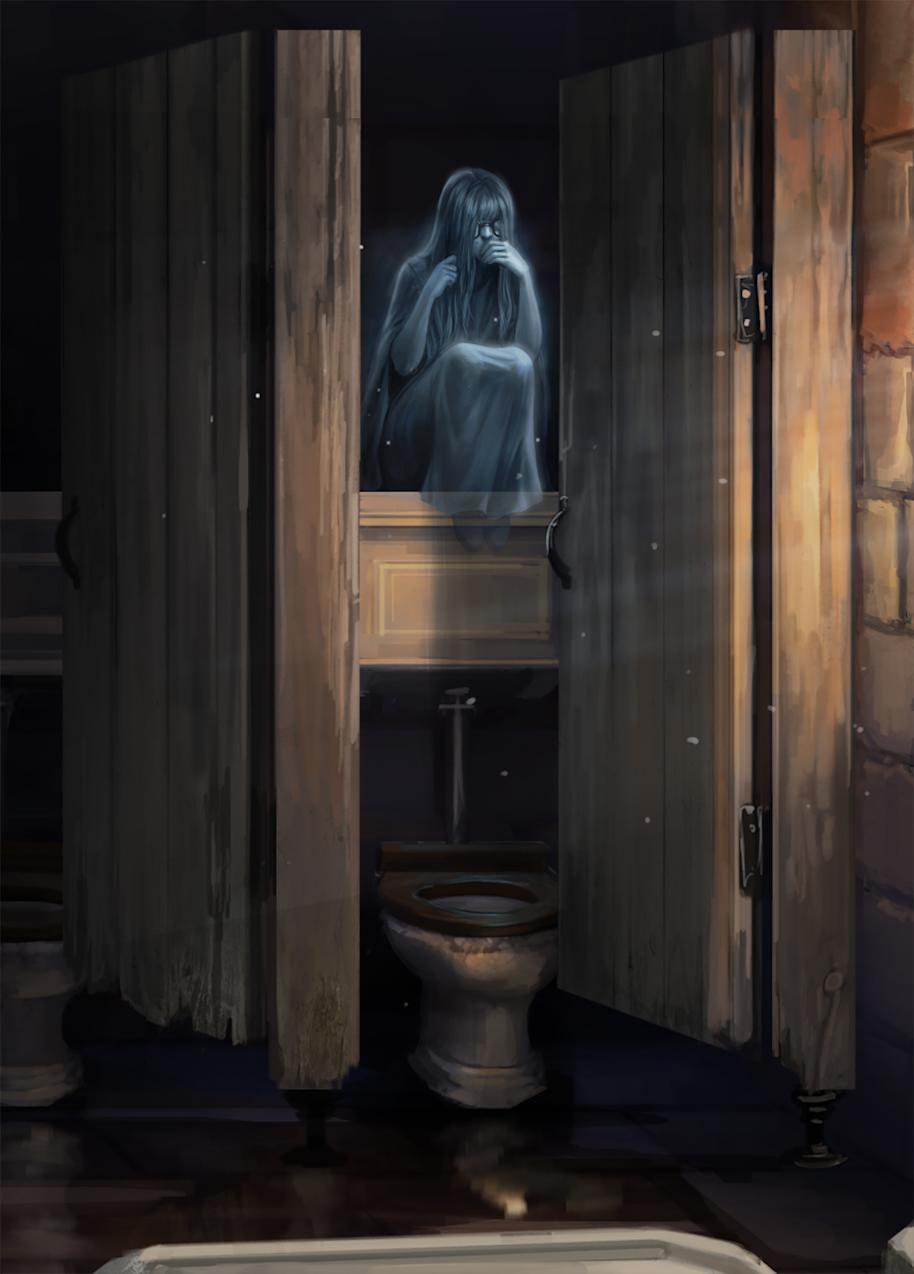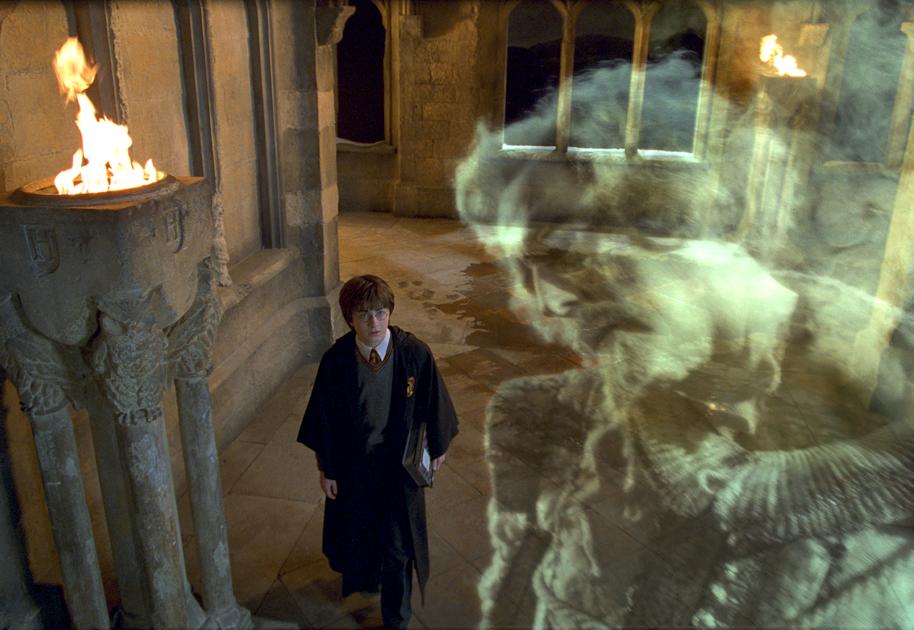
This melancholic quote from Nearly Headless Nick sums up the fate of a wizarding world ghost rather well.
‘I was afraid of death,’ said Nick softly. ‘I chose to remain behind. I sometimes wonder whether I oughtn’t to have ... well, that is neither here nor there ... in fact, I am neither here nor there ...’ He gave a small sad chuckle. ‘I know nothing of the secrets of death, Harry, for I chose my feeble imitation of life instead.’
Harry Potter and the Order of the Phoenix
How does Nick’s definition of what it is to be a ghost apply to the other depictions of the undead in fiction?
Ghosts usually come back because of ‘unfinished business’
A ghost’s strange half-life isn’t unique to the wizarding world. The concept of someone returning as a ghost is rooted in the belief that the spirit exists independently from the body. Variances in culture and religion aside, in the ancient world many believed in some form of life after death.
How that post-death life was shaped could be determined by how an individual lived, how they were disposed of, and how they were remembered. This is partly why funeral rites developed, because improper burial was seen as one of the reasons the dead might return.
All cultures tend to agree on one main reason for the existence of ghosts: unfinished business. Whether it is avenging murder or fulfilling some other desire, those that return as ghosts often do so in order to finish something. The only unfinished business on Hogwarts teacher Professor Binns’ mind was the next day’s lessons, but Moaning Myrtle came back expressly to haunt her tormentor.

One of the earliest examples of a ghost comes from the Bible
In the first book of Samuel, Saul, King of Israel, visits a medium. He asks her to conjure up the dead prophet Samuel, who appears ‘as an old man covered in a mantle’. This is said to have inspired the image of a white, flapping ghost, like the sheet-covered trick-or-treaters you see at Halloween.
The actual word ‘ghost’ has been in use since the late 16th century, although it comes from the Old English word ‘gast', which had its roots in western Germany. Fear of ghosts has just as long a history. Even when the ghost in question was much-loved in life, their reappearance is rarely welcome. In the ancient world, for the dead to cross back was a sign something was wrong. This comes across in the earliest tales and has largely remained the case in everything from Victorian ghost stories to modern horror films.
Ghosts aren’t always scary, unless they have reason to be
This fear comes despite the fact that there are benevolent ghosts as well as malevolent ones. At Hogwarts, most of the ghosts mean no harm. They might be quiet and sad, like Ravenclaw’s Grey Lady, but they’re not all angry and vengeful.
In folklore, dangerous ghosts are usually the ones whose unfinished business is connected to something violent. They are angry about being dead, in contrast to the more emotionally neutral ghosts who have returned for other, more benign reasons. Still, receiving a visit from any ghost isn’t usually a cause of celebration.

Ghosts’ appearances can depend on circumstances
As a ghost’s nature follows what happened to them in life and death, so does their appearance. Although by definition a ghost is a spirit separated from a body, most ghosts usually look like pale, translucent versions of their pre-death selves. They can sometimes carry reminders of their lives or the means of their death, like Slytherin’s Bloody Baron who, we learn in Harry Potter and the Deathly Hallows, returned to the world as a ghost wearing chains, as an act of penance for the murder of Helena Ravenclaw.
Ghosts tend to haunt specific places
Most myths tell us we’re likely to sense ghosts in a place that meant something to them in life, or is associated with their death, for example the place a murdered person returns to in order to seek vengeance, or the location of a tragic accident in which the now-ghost died. They are usually associated with one place, or at least with one person or group of people.
In modern popular culture most ghosts don’t travel round much, so the Hogwarts ghosts are something of an exception, although it’s fair to assume that the school meant something to them in life.

But not all ghosts want to haunt you
The Victorians pretty much invented the ghost story as a genre, but ghosts have been popping up in stories for centuries. From Samuel in the Bible or the ghost of Hamlet’s father in Hamlet, to Susan Hill’s Woman in Black and the titular character in Beloved, they started out being depicted as frightening, vengeful and surprising.
There are exceptions, and one comes in the form of the famous ghost story by Charles Dickens. A Christmas Carol drew on the Victorian fascination with all things spiritual, as his Ebenezer Scrooge faces three ghosts, ranging from jolly to fearsome. All the ghosts help Scrooge travel through time and space to see his past, present and future.
So ghosts aren’t all that bad. It just depends which one you bump into.
To celebrate the 20th anniversary of Harry Potter and the Philosopher’s Stone, every Friday Pottermore will explore themes, moments, characters and much more from the very first Harry Potter story. Come back next week when we look at Pottermore’s guide to wizarding world pets.



